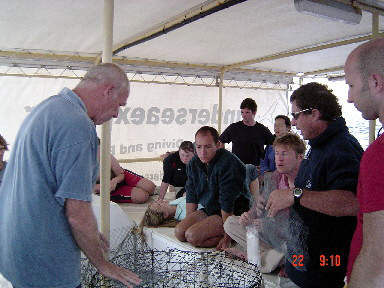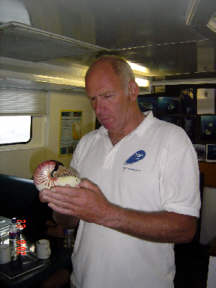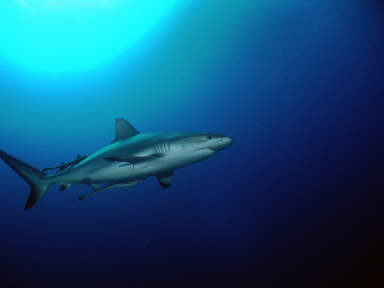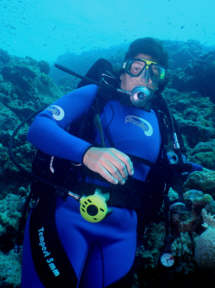Diving Expedition ‘Osprey Explorer’, Great Barrier Reef – Aug / Sept 2005
MP Branch, HQ ARRC, BFP 40 (with 2 adult reservists from G3 Cadets 43 Bde, Bulford Camp)
This expedition, which had nothing to do with the Osprey Bird, was mounted from Germany with participants from various military Units stationed both in Germany and the UK. It took place on board "Underwater Explorer" which was a scientific research vessel, based in Port Douglas, Queensland, Australia, over the period 15 August to 2 September 2005.
The main purpose of the expedition was to assist the Marine Biologists on board Underwater Explorer with scientific research relating to the habitation and feeding habits of White Tip Reef Sharks and Deep Sea Nautilus. The military aims of the expedition included consolidation and advancement of diver training for the participants. Throughout the period, daily diving took place on the Great Barrier Reef and Osprey Reef, which lies in the Coral Sea approximately 120 nautical miles from the East Coast of Australia, with a maximum of 4 dives a day at depths of up to 35 metres.
 Mal demonstrating Nautilus trap construction |
 Mal and Nautilus |
Osprey Reef is a coral seamount far removed from the relative safety of the Great Barrier Reef and is of interest to marine biologists. In particular the biologists focus upon the resident shark population, which are under threat from indiscriminate fishing and trade in shark fins. In order to provide useful data on which to base conservation arguments, the sharks must be identified and tracked and, where possible, population numbers must be established. The monitoring of sharks involved identification and tagging individual sharks by attaching a transmitter around its tail with the use of a cable tie. The transmitter stays attached to the shark for a period of seven days over which time the transmitter was collating data regarding the shark’s movements and feeding habits. Data included information on the shark’s depth and its surrounding water temperature; this information was recorded at set time intervals. At the end of the week, the transmitter data is downloaded onto a PC where periods of sleep, and maximum feeding activity were discovered.
This research will assist in instigating regulations to protect sharks particularly in areas where they are considered to be at risk.
 Shark |
 Cpl Nikki Gilbert underwater |
The Deep Sea Nautilus’, which are found in waters between 300 and 500 metres deep, were caught in traps similar to that used for the capture of shellfish. These creatures are classed as living fossils and were monitored for their size and population. The research relating to the fossils has been ongoing for the past 8 years; each fossil when caught was allocated a serial number. The Nautilus captured during this expedition included one which was a recapture and this provides valuable data as to their growth rates.
Between dives, the marine onboard marine biologists gave a series of lectures relating to the undersea world. In addition to the lectures, practical expeditions were conducted where water samples and marine organisms were analysed in order to ascertain the level of pollutants as a result of sewer outfalls.
On completion of the diving phase, the expedition was fortunate enough to join a tribal elder from the Kuku Yalanji local aboriginal tribe. This proved to be a fascinating day in the Daintree Rainforest, starting with the history of the indigenous tribe’s lifestyle, relationship with the Rainforest, information about the fauna and flora, and of how their community has had to adapt to modern day Australia. The opportunity to sample a range of bush tucker was welcomed by some and avoided by others!
Finding oneself in the middle of a large group of Grey and Hammerhead sharks is not something one experiences every day – at least not in the Northern Hemisphere. The opportunity of visiting Australia and absorbing the culture as well as experiencing the underwater world of the Great Barrier Reef and that of the Coral Sea is something that will remain in our memories for many years to come.
Maj Malcolm Strickland, (G3 Cadets 43 Bde, Bulford Camp) Cpl Nikki Gilbert